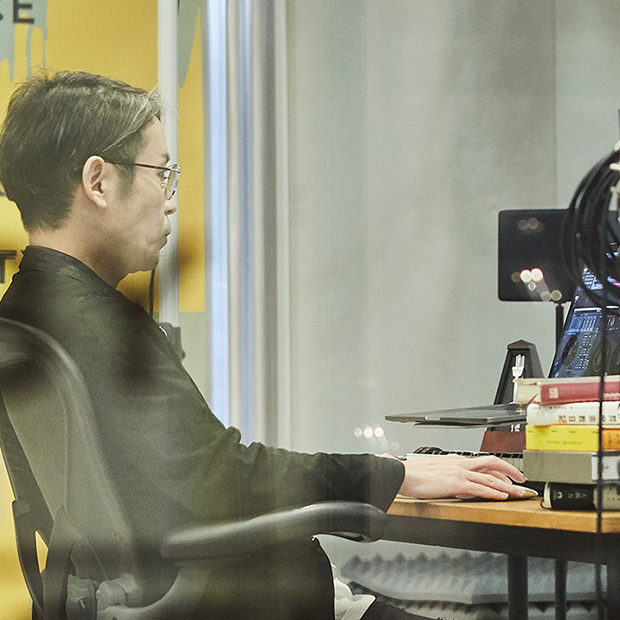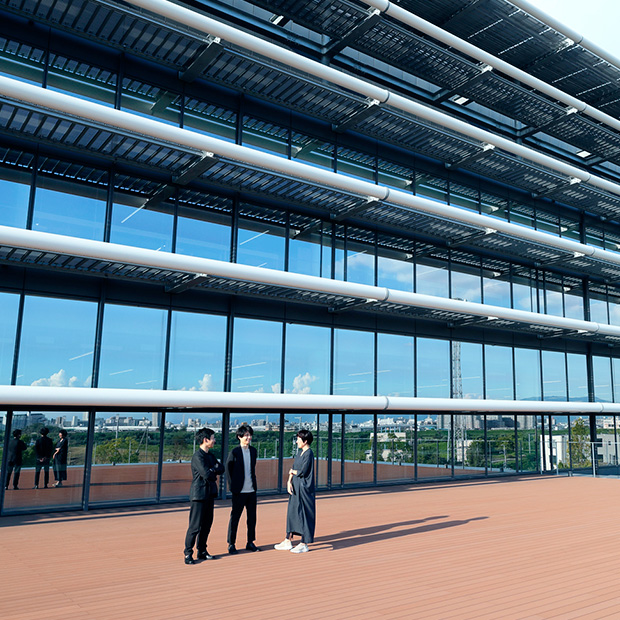WIRED publishes its “where tomorrow is realized” coverage of life, society, and culture from a technological perspective. Through expression that extends beyond its print magazine to its website and creation of cafe space, the media company offers us a glimpse of the future. In this interview, we asked Kei Wakabayashi, former editor-in-chief of WIRED JAPAN from 2012 to December 2017 and the author of “Goodbye to the Future: Editor’s Chronicle 2010-2017” published in April 2018 by Iwanami Shoten, to share his thoughts on the intersection of technology and design along with his perception of the future.

Designing Context, Not Product
“The business model for the era of selling mass-produced products no longer holds true. With the consumption cycle at a standstill, functionality and aesthetics are not the only reasons why people purchase products. Instead, the context and story behind the products have become increasingly more important.”
Wakabayashi also talked about the relationship between future companies and consumers from his unique perspective as former editor-in-chief of WIRED, which connects technology and consumers. He may already see what future consumers will be like.
“The relationship between manufacturers and consumers has changed. Apps are a good example. The transaction does not end with the selling of the finished product. An increasing number of businesses charge a monthly fee for using apps. Manufacturers constantly make improvements based on consumer feedback and provide the latest version of their products.
In fact, selling a product is not the end anymore. The consumer has transformed into the always-connected user. As a result, the domain of a designer’s work does not simply end with only one product but naturally encompasses communication design. In this way, users are always connected to the company and not just a single product. Consequently, the scope of design inevitably broadens to the entire company. ”

Value of Sustainability
“That was what I valued when I supported communication of DK-Power, Ltd., the company that Daikin Industries, Ltd. founded in 2017 as a power generation company using a micro-hydro power generation system. The focus was not on excellent functionality or low cost but on clearly defining company value.
In general, energy had been conventionally distributed through a centralized distribution system. In that system, quasi-public companies distribute energy in their respective territories from the place of energy production to a distant consumption area, allowing benefits in one region to be built on the sacrifice of another region. The system can be blamed and criticized from various aspects. From the viewpoint of users, it is highly risky because their lives may be affected by a disaster occurring in a distant area from their residency. If the central system fails, damage stretches over a wide area.
In contrast, the micro-hydro power generation system produces energy in an autonomously distributed manner and allows energy to be produced and consumed locally in the same area. In addition, it saves the cost for developing new infrastructure and uses the clean energy of hydropower. That is why the system is much more sustainable than the conventional system.

micro-hydro power generation system
As Daikin sells more air conditioners as an air conditioning manufacturer, more energy is consumed by society. The micro-hydro power generation system provides a mechanism to produce energy, which represents self-reflection of the company. Energy-related technologies, including water wheels, have largely changed human history, but the impact of their advancement on the environment has reached a limit. However, it’s not that we can deny modern technology. The micro-hydro power generation system was created under such circumstances as an idea to use existing water infrastructure with some changes by leveraging a new technology. I think this is a very clever idea.”

Incorporating Sustainability into Design
“When sustainability is valued, a sense of time—or a timeframe—is changed. The timeframe of sustainability is expressed as a circle, not as a line. Most of the conventional products were designed based on a line from production to disposal without consideration beyond the line. In the future, however, it will be indispensable in the design field to design products in a circular timeframe based on the big picture of the product life cycle.
That also leads to an idea of return. I think people feel a growing sense of caution in consuming products and services just for their own egos. As a part of design, it may also be an important issue to include in services a system in which the end user’s selective behavior of consumption provides some return to others.”
Mr. Wakabayashi thinks companies have not fully responded to changes in consumer behavior yet.
“Most companies are still engaged in streamlining everything, placing the highest priority on maximizing cost performance. Obviously, these companies are only pretending to address sustainability issues and are reluctant to act. This is why corporate value does not improve. As I said in the beginning, users see the company itself, not just a product.
With a recent shift from a widespread idea of CSR to CSV, companies say they must provide value to all stakeholders instead of just making a profit. But in reality, I think very few companies are committed to doing it. The city of Austin in the U.S. enforces a ban on providing plastic bags at all stores in the city. It’s just a matter of having the resolve to do it. There may be some inconvenience involved, but the citizens are proud of the results.
Companies can do similar things on their own. If a plastic bag is unnecessary, designers should design a strong, useful paper bag that’s even less expensive than plastic. Isn’t considering ideas like that the designer’s job in the first place?”













